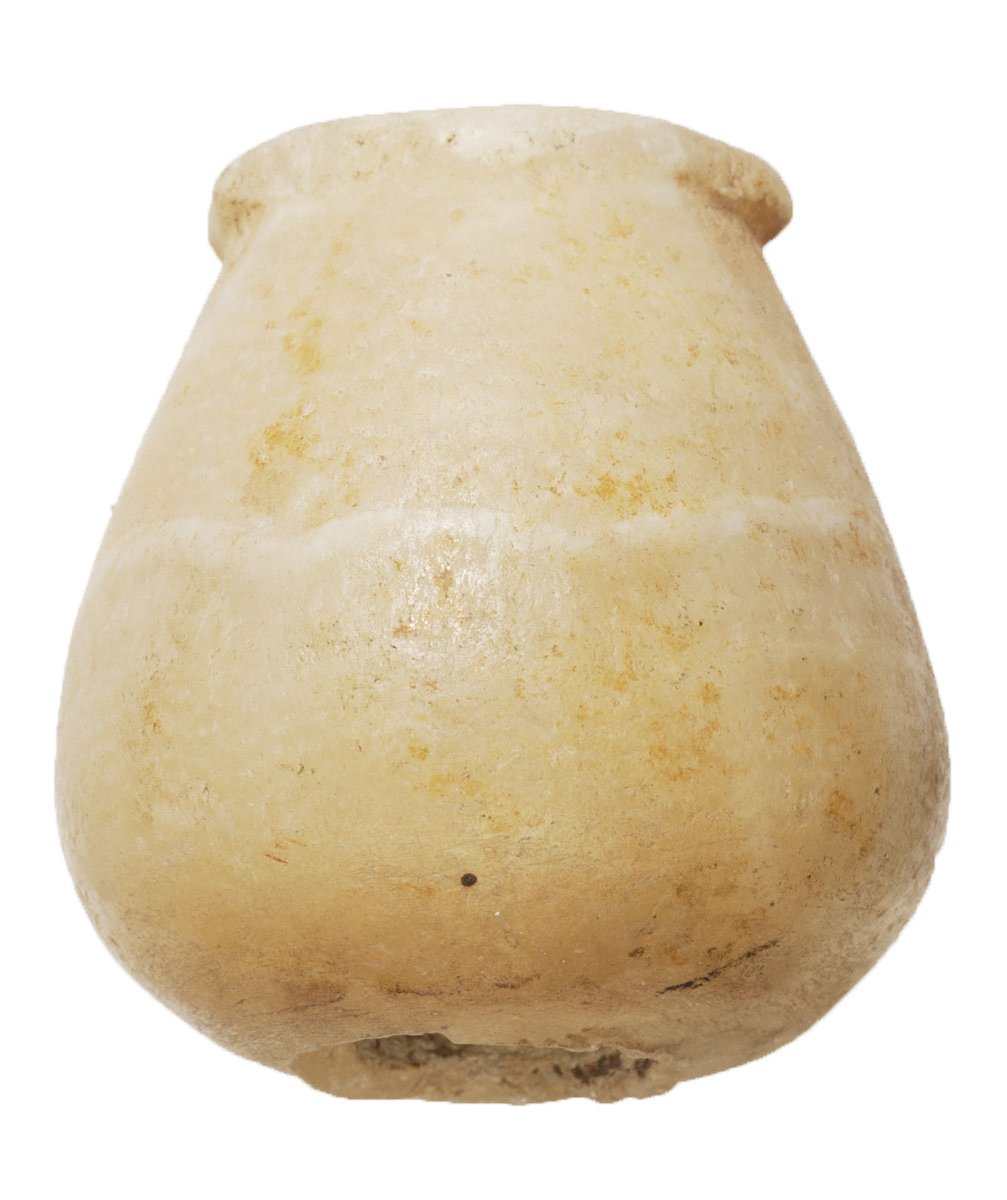
Miniature Vessel
Egyptian Art
| Date | Kr. e. 780–656 |
|---|---|
| Object type | religious or cult object |
| Medium, technique | terracotta, moulded |
| Dimensions | 14 × 7.2 × 2.5 cm |
| Inventory number | 84.149-E |
| Collection | Egyptian Art |
| On view | This artwork is not on display |
This object exemplifies a group of ancient Egyptian statuettes, made of baked clay or less frequently limestone, each depicting a female figure lying on a bed or couch, stand-alone or often accompanied by a small-scale figure of a child, sometimes bordered by images of vessels or cosmetic tools. This type seems to have been introduced in the New Kingdom, during the late Eighteenth Dynasty and continued to be used until the Late Period. Their overall theme and defining formal characteristics relate them to Late Period and Hellenistic votive figurines, made of baked clay or more typically limestone, that depict a female figure standing, with or without a child, within a chapel or a shrine.
This particular piece depicts a single naked female figure reclining on a bed with both arms at the side of her slender body. She wears a short, round wig; her head rests on a pillow. The figure has a mirror modelled on the bed on her left, and a ceramic vessel placed on a stand on her right. The head of the bed is rounded like that of a stela, the now broken footboard was indicated by an upward curve which might have also functioned as a base. The top left and bottom right corners are damaged. The statuette was made in a single-piece open mould, the edges are rounded; the back of the slab is flat. Much of the post-firing plaster cover has been preserved on the surface of the bed and in the curves, but the original reddish painting can only be traced. A line of breakage can be seen in the lower section of the plaque, across the vessel, the thighs and the mirror. Dating of the piece is based on the hairstyle which was popular and widespread during the Twenty-fifth Dynasty.
Prevailing scholarly theories tend to label these objects as fertility figurines that may have been deposited as votive offerings in tombs, domestic shrines, and temples of the goddesses Hathor, Mut or Anuket to promote successful conception and grant divine blessings in the perilous time of early childhood. Owing to their high popularity, they were fashioned in large quantities in settlements and ceramic workshops belonging to temples and cult centres.
This record is subject to revision due to ongoing research.